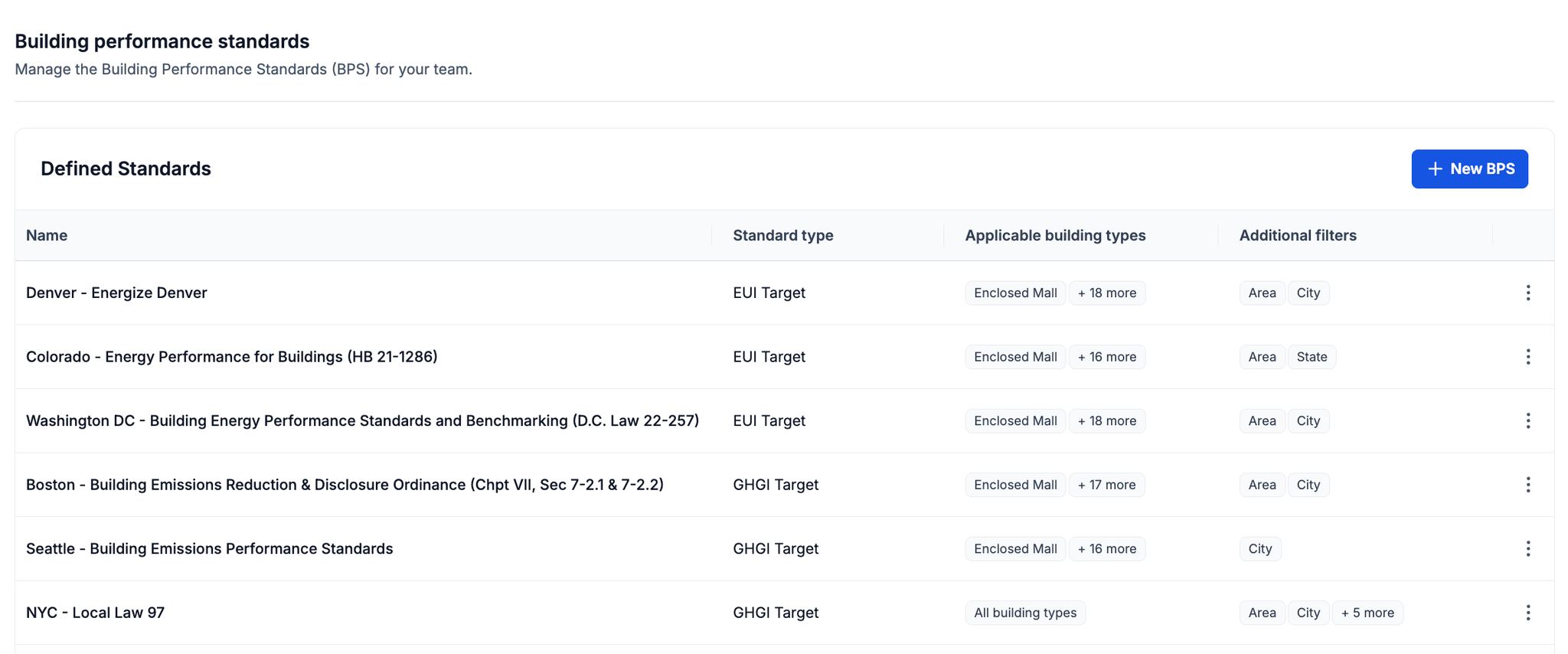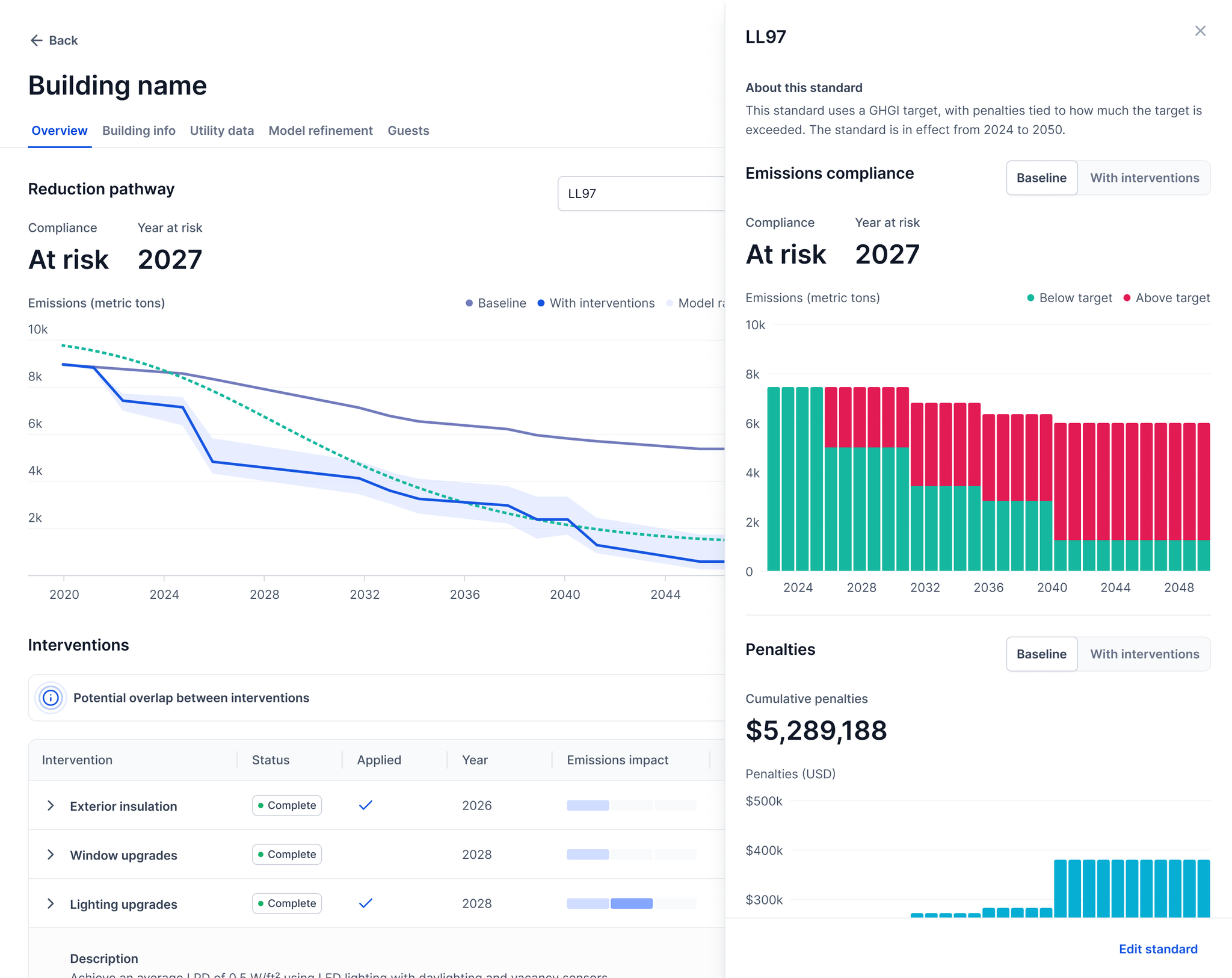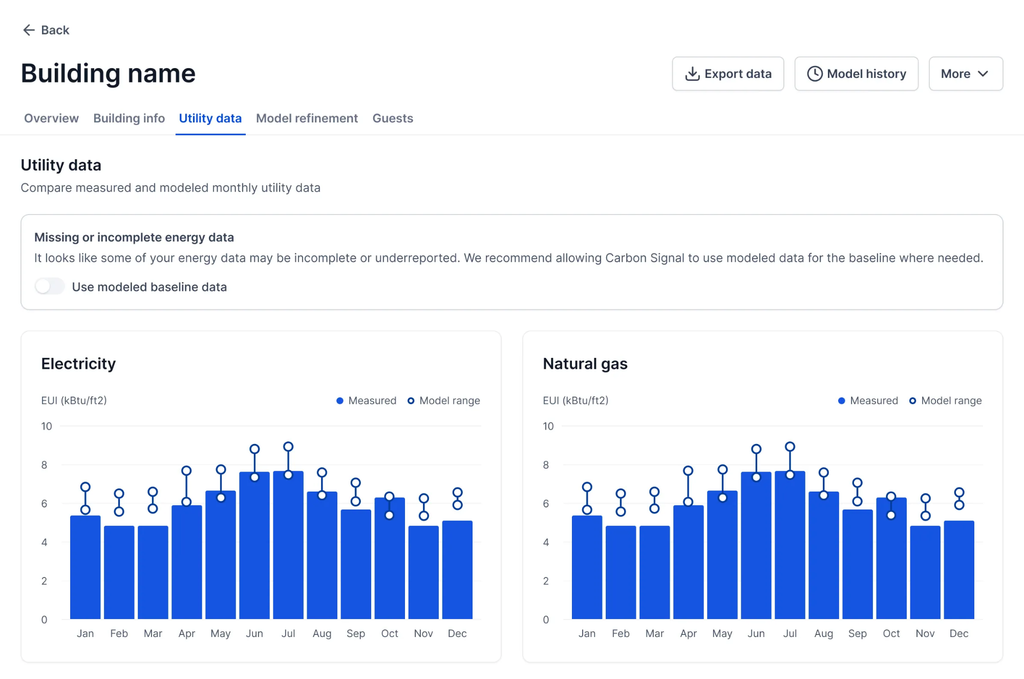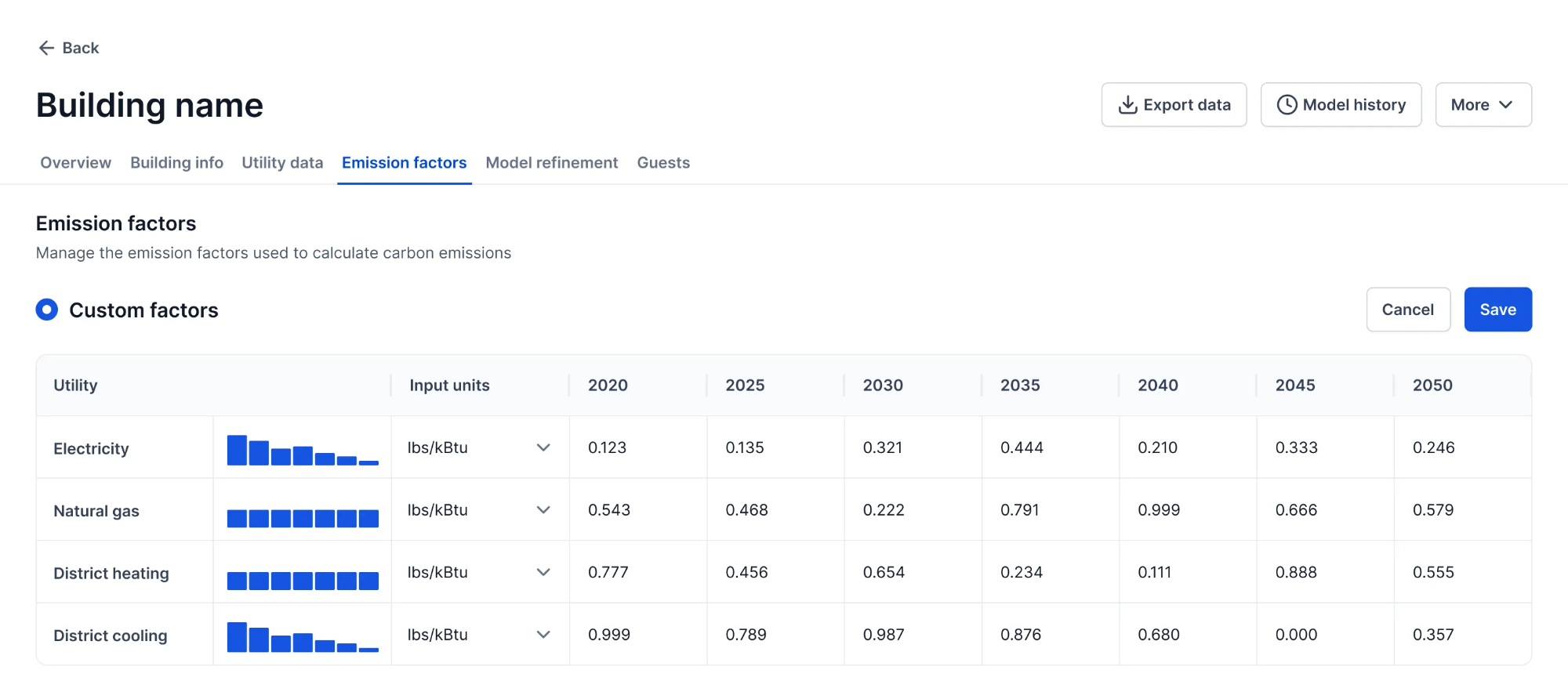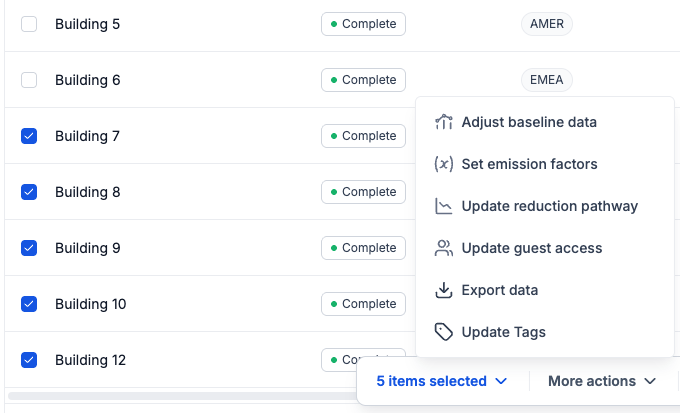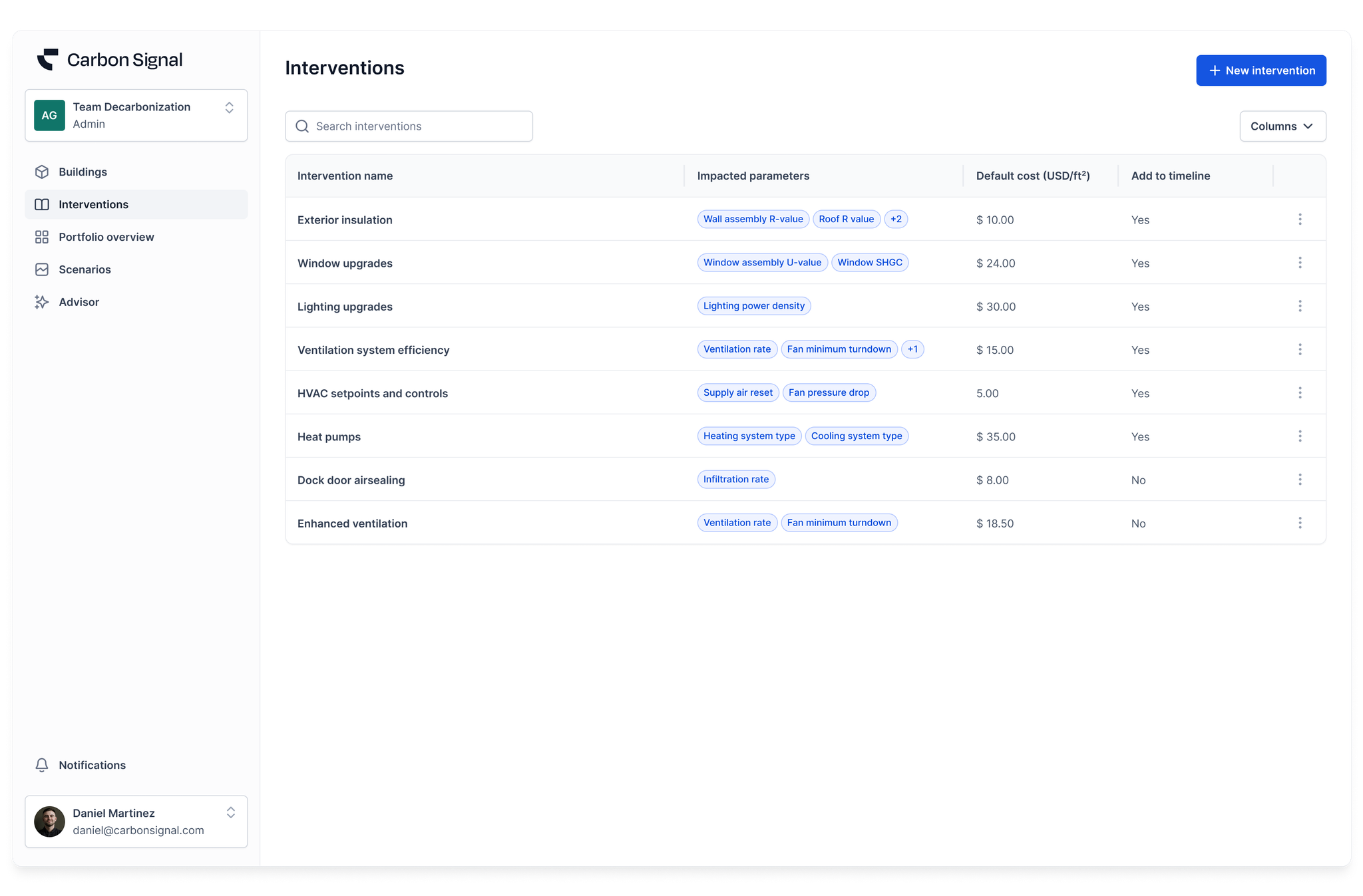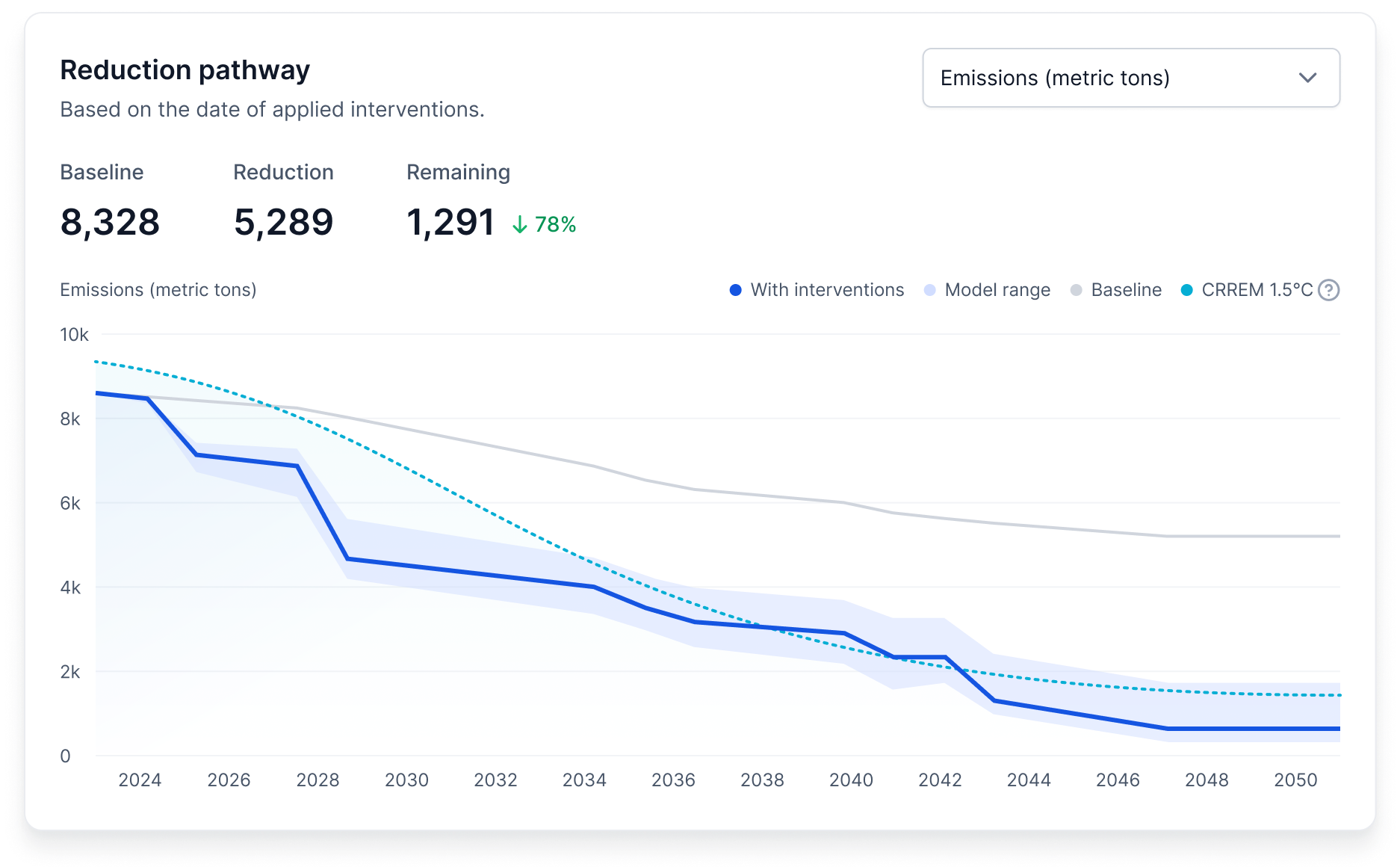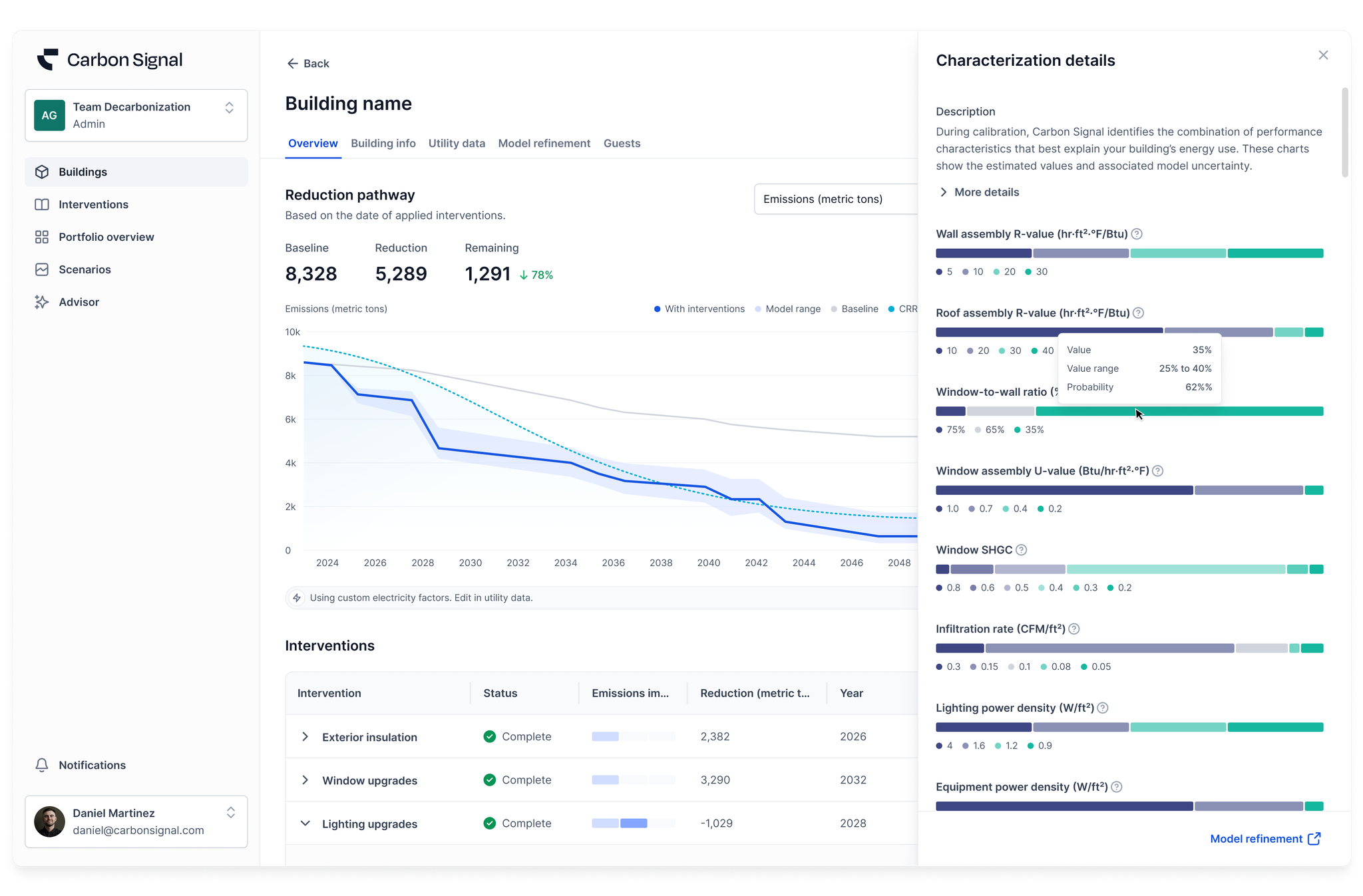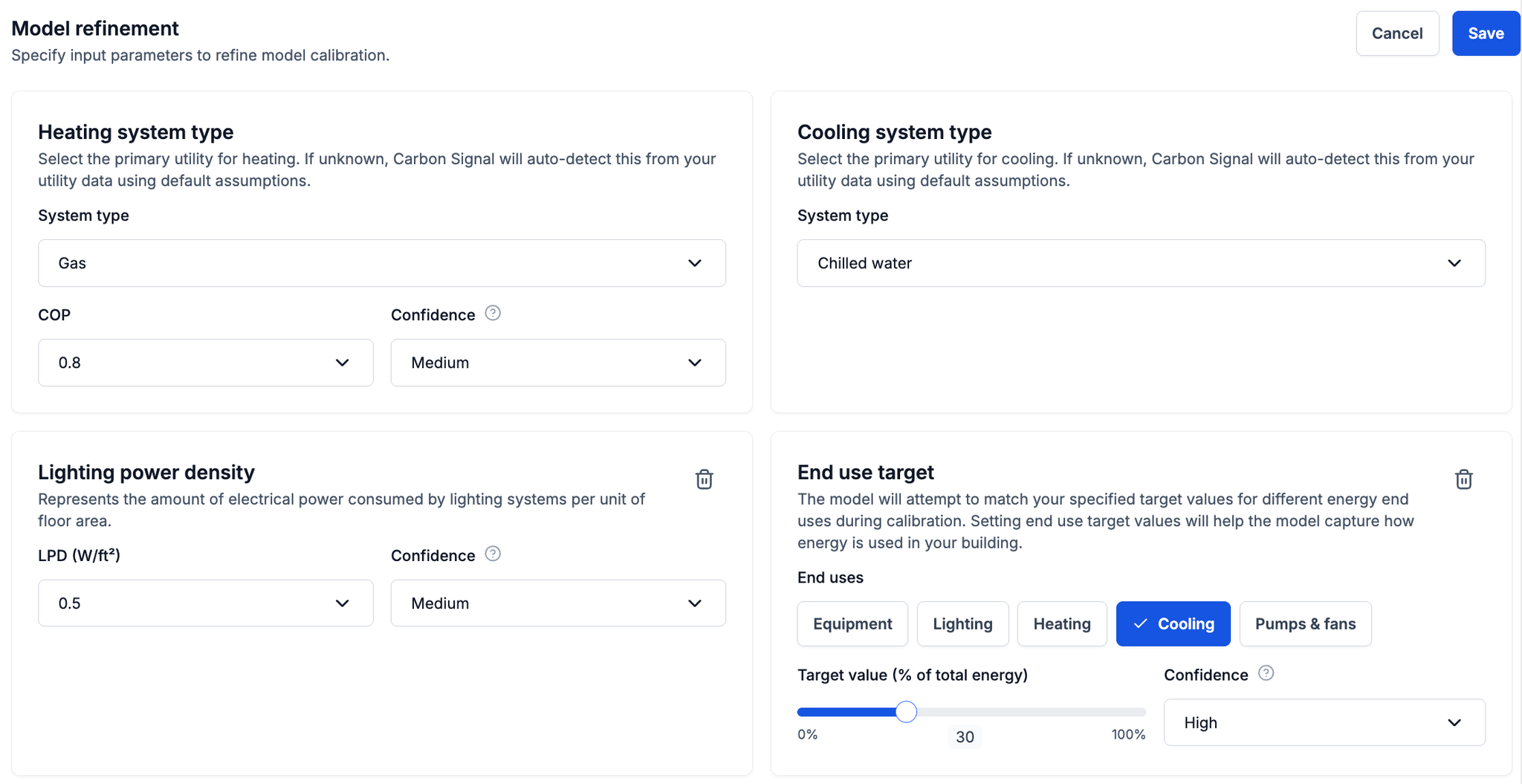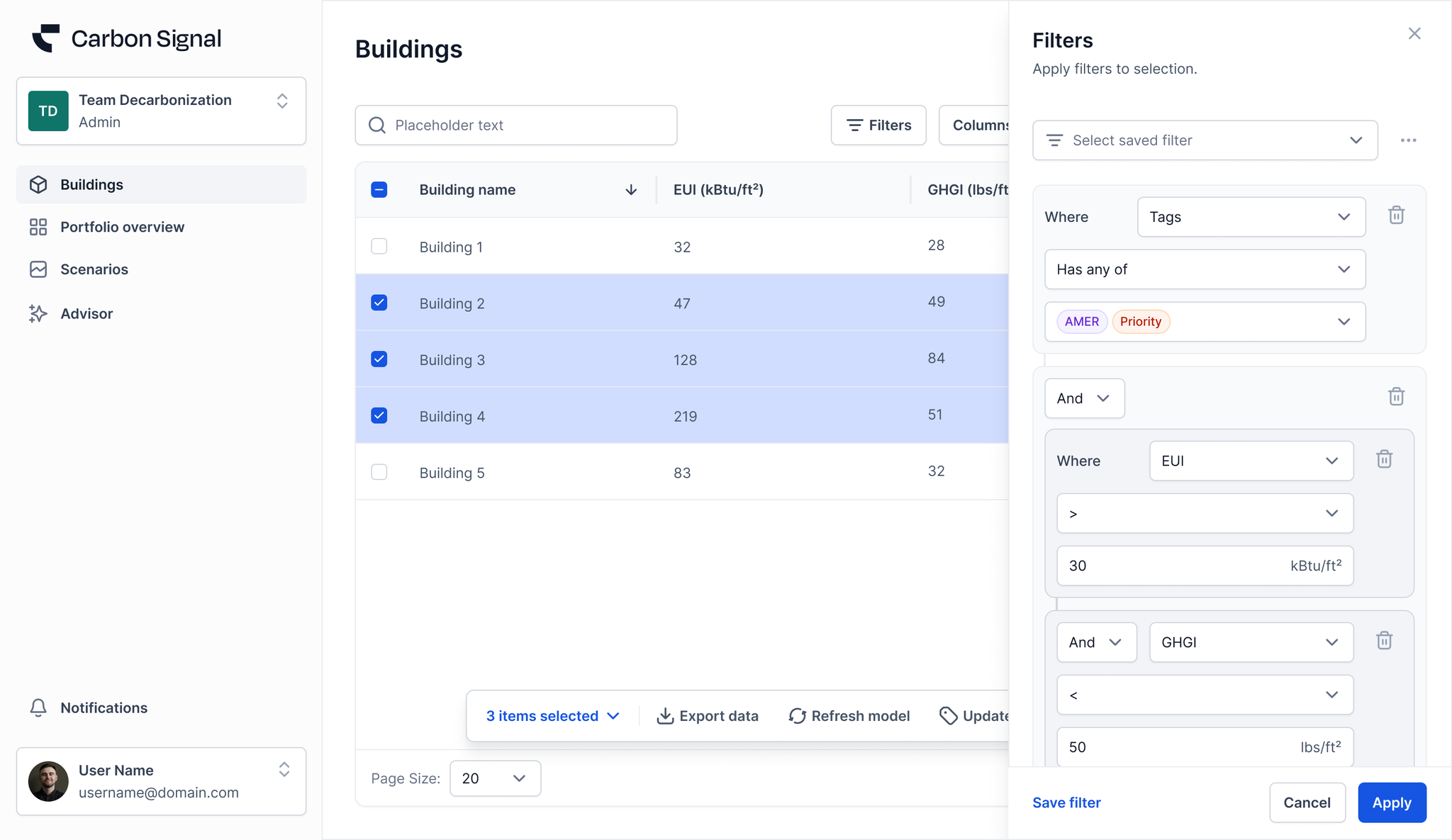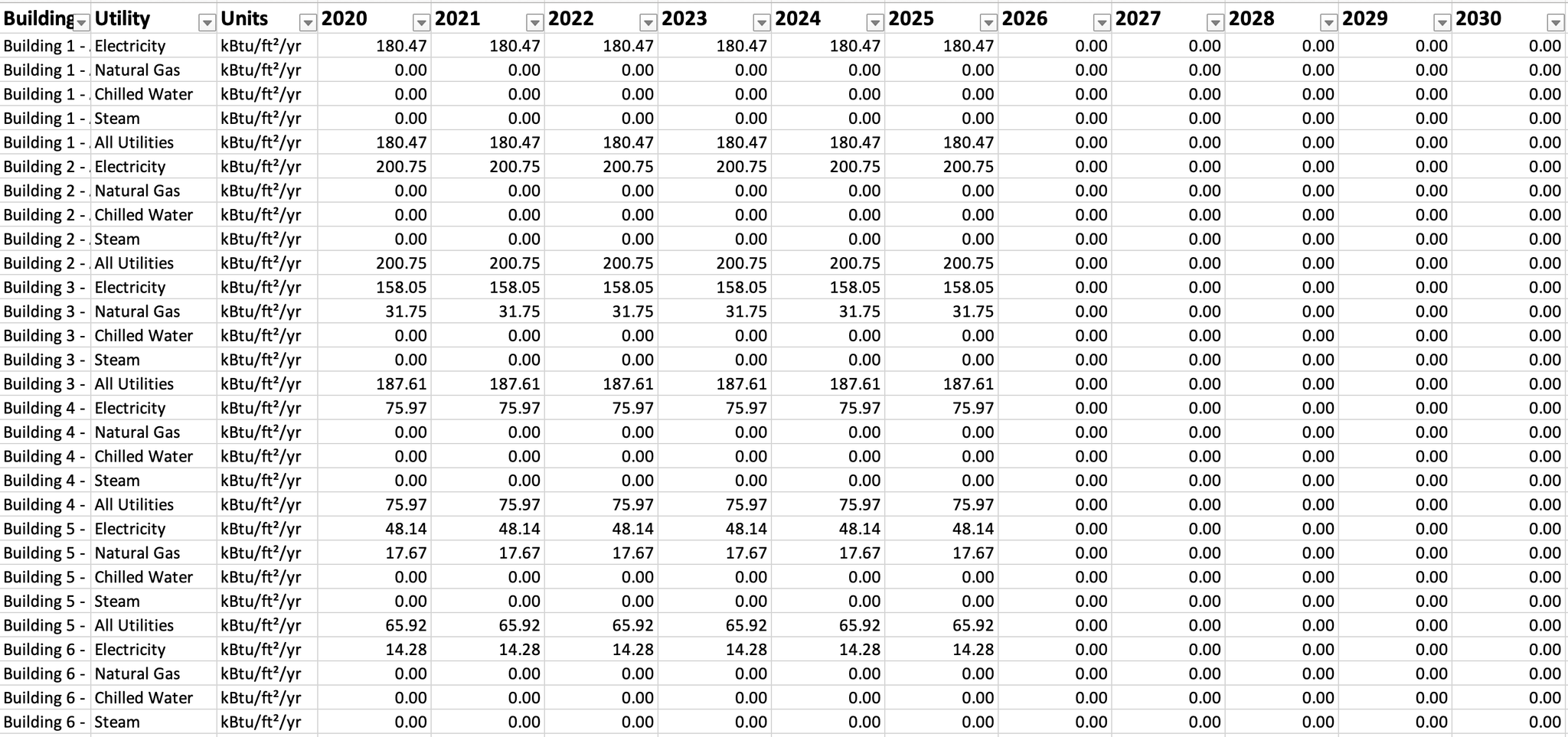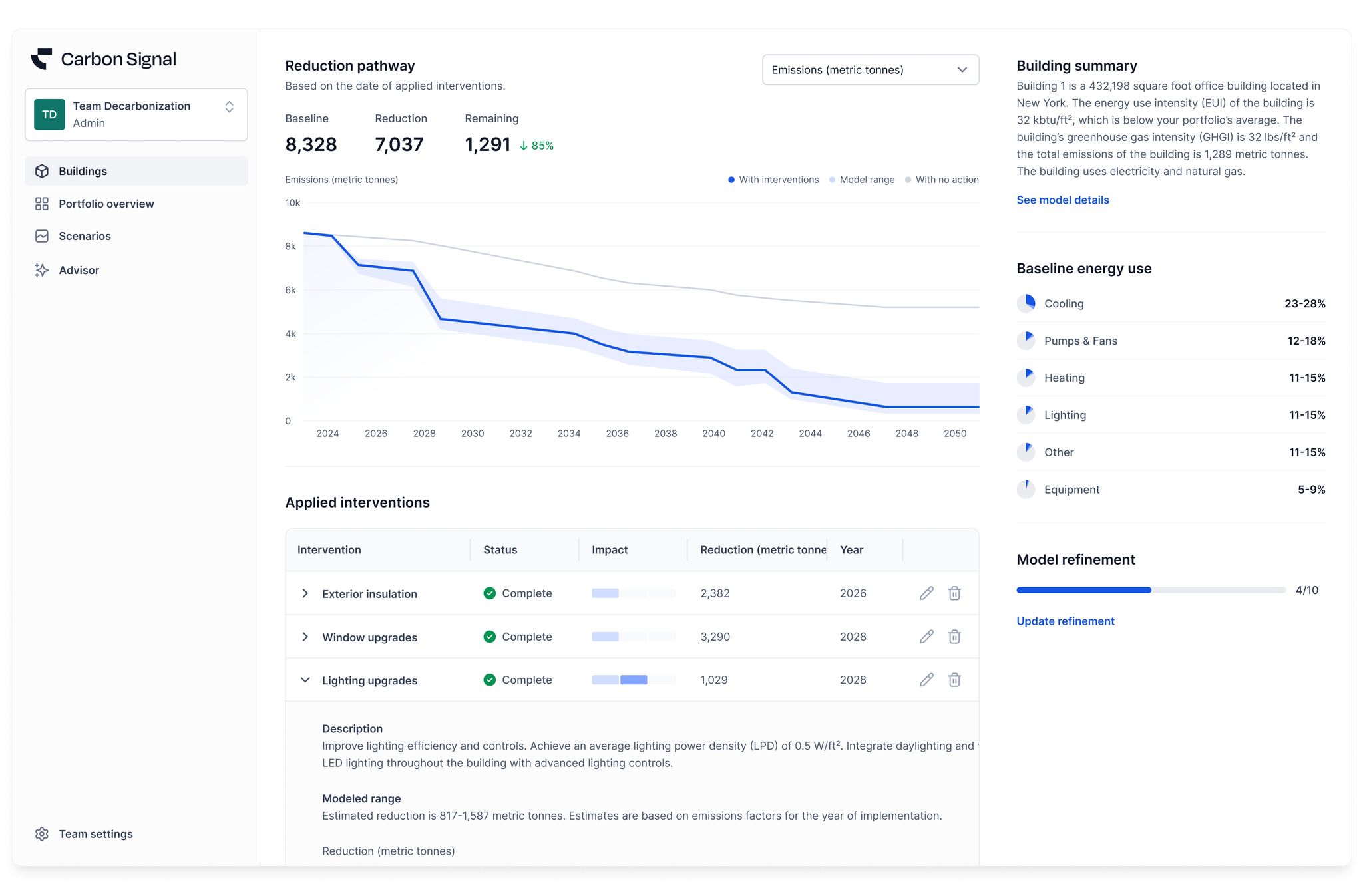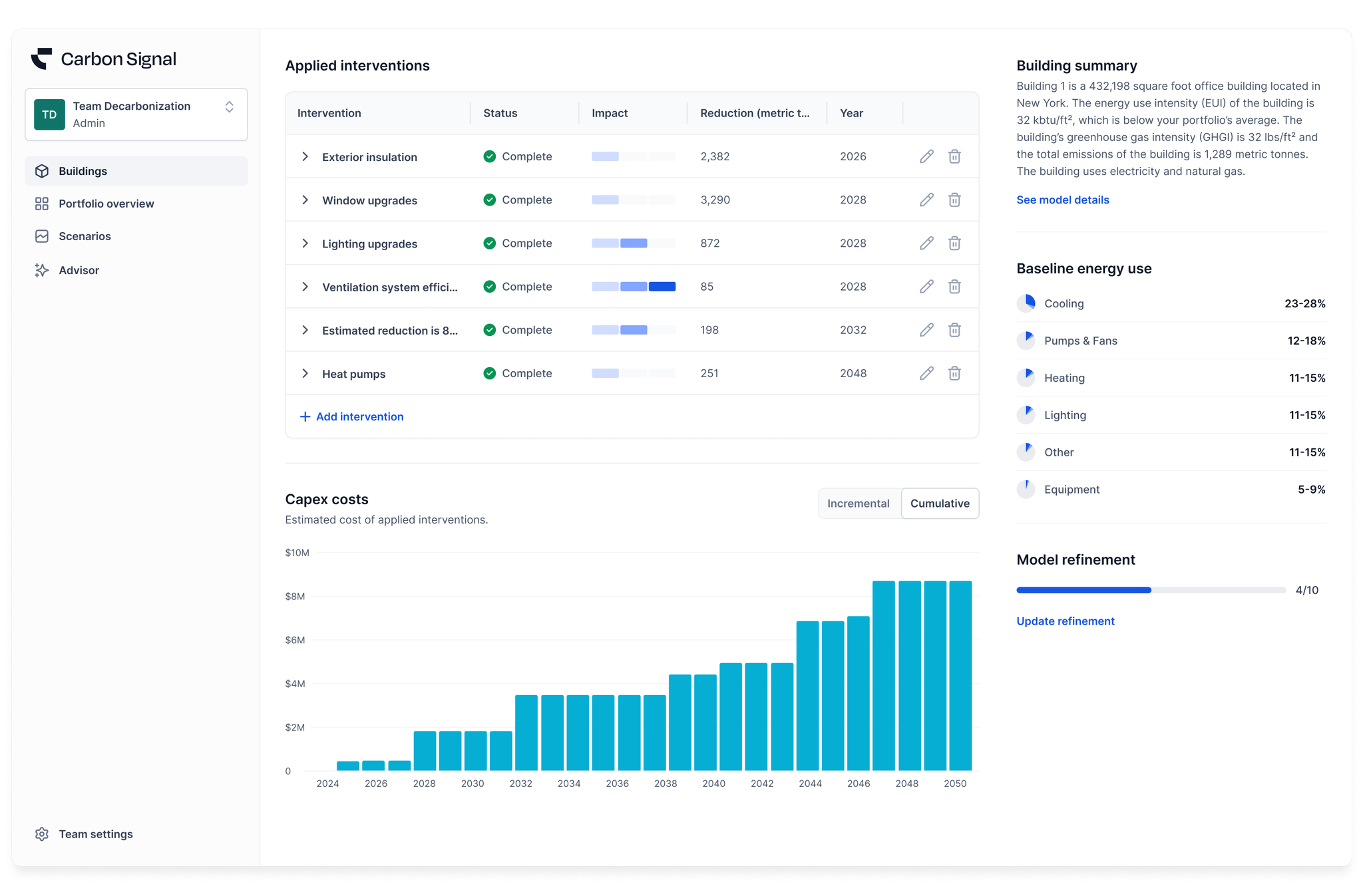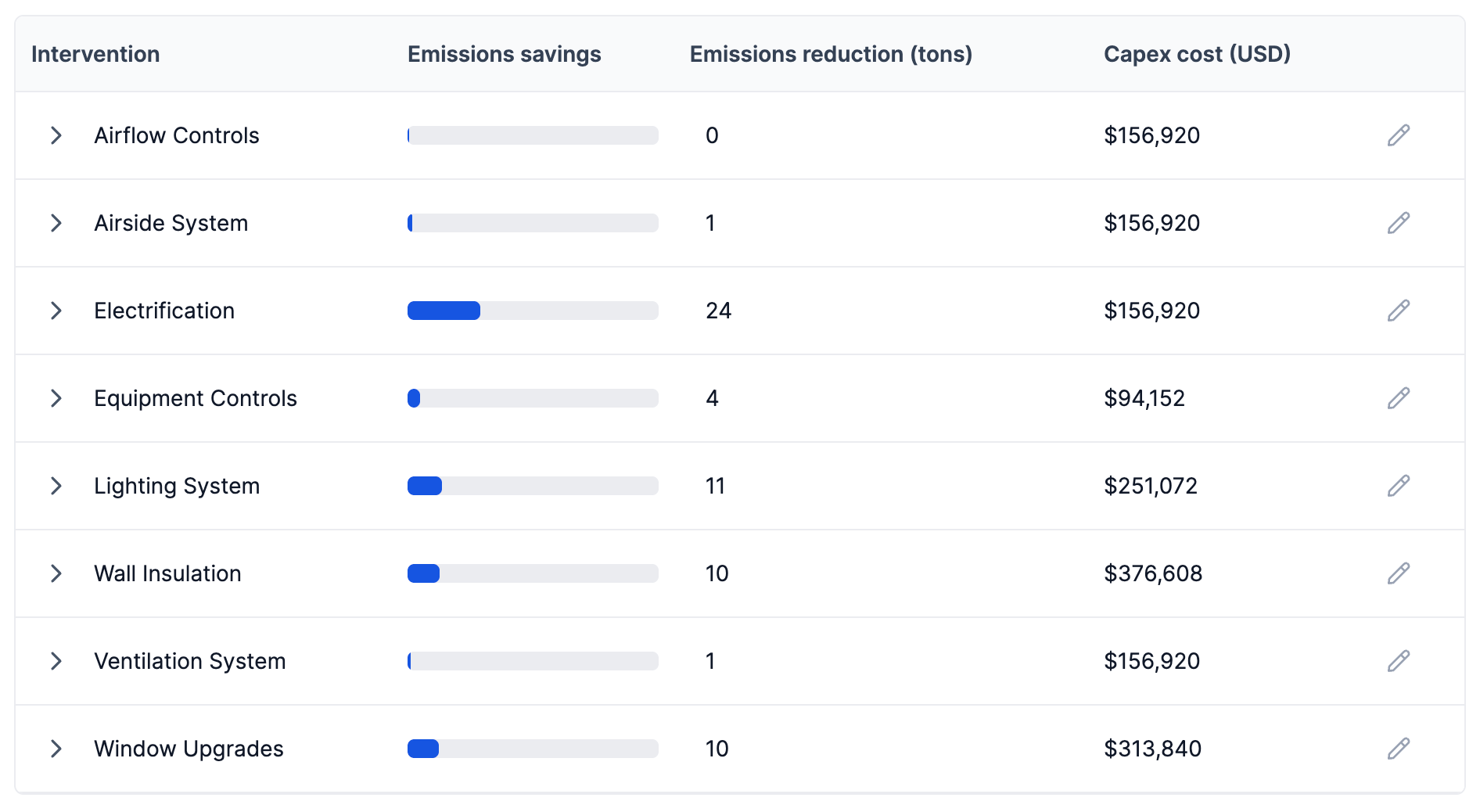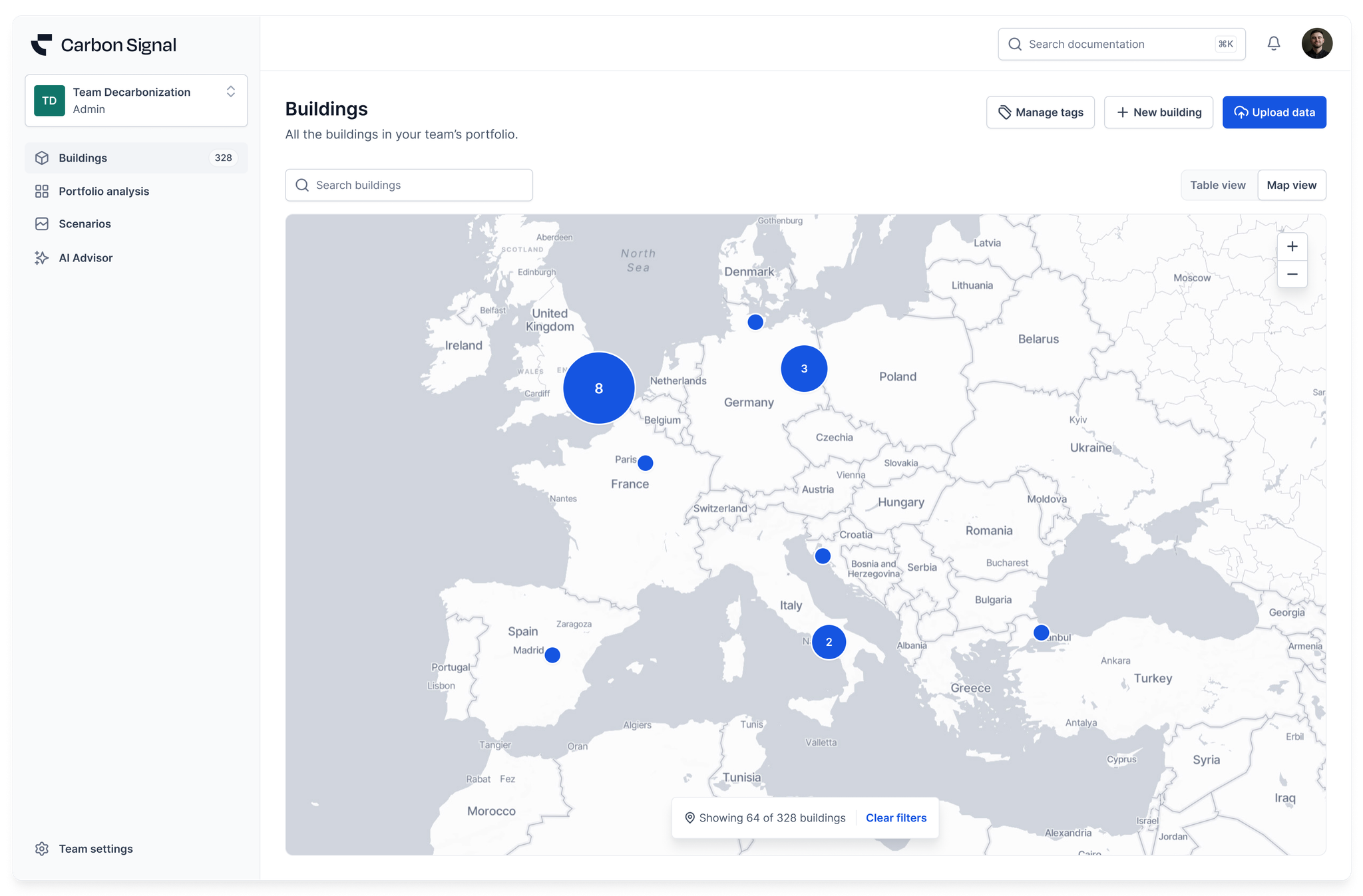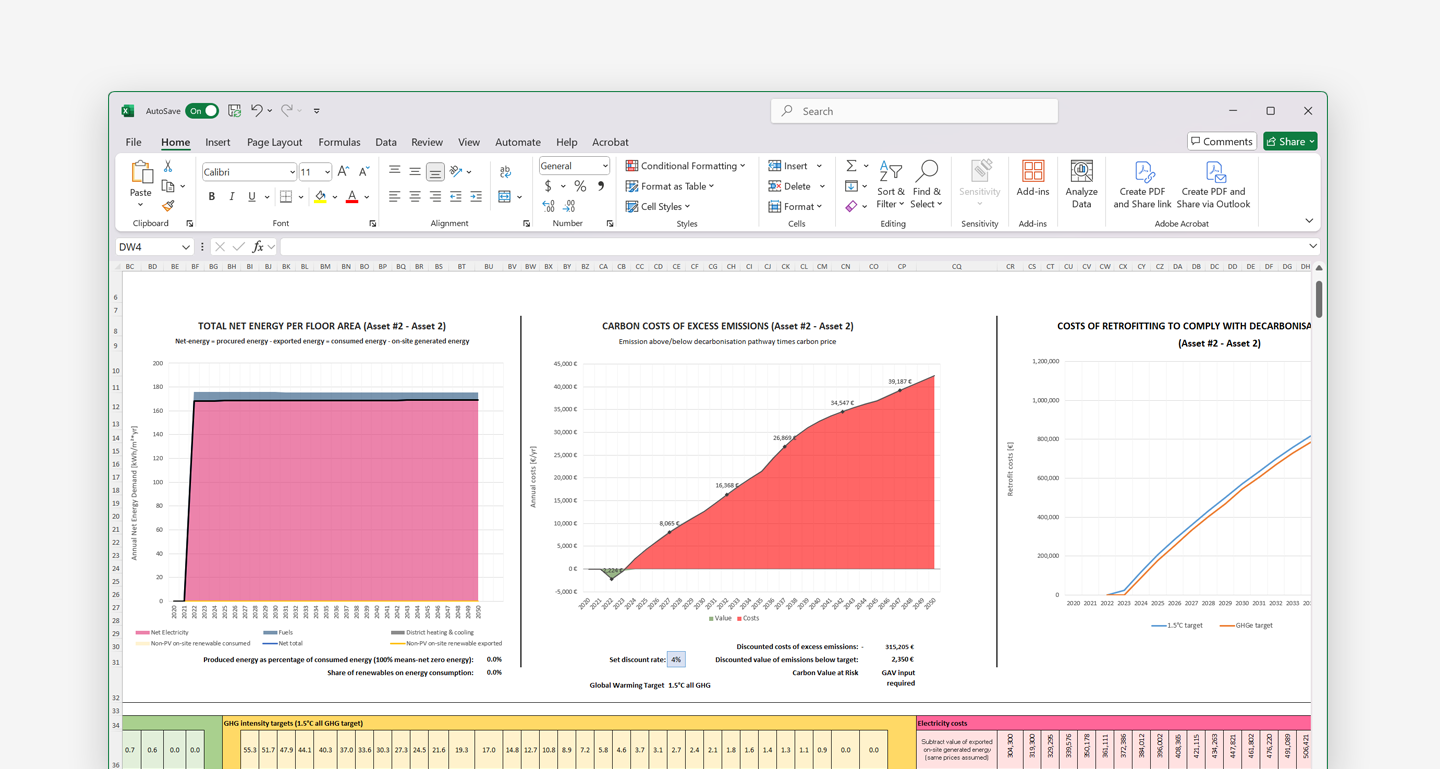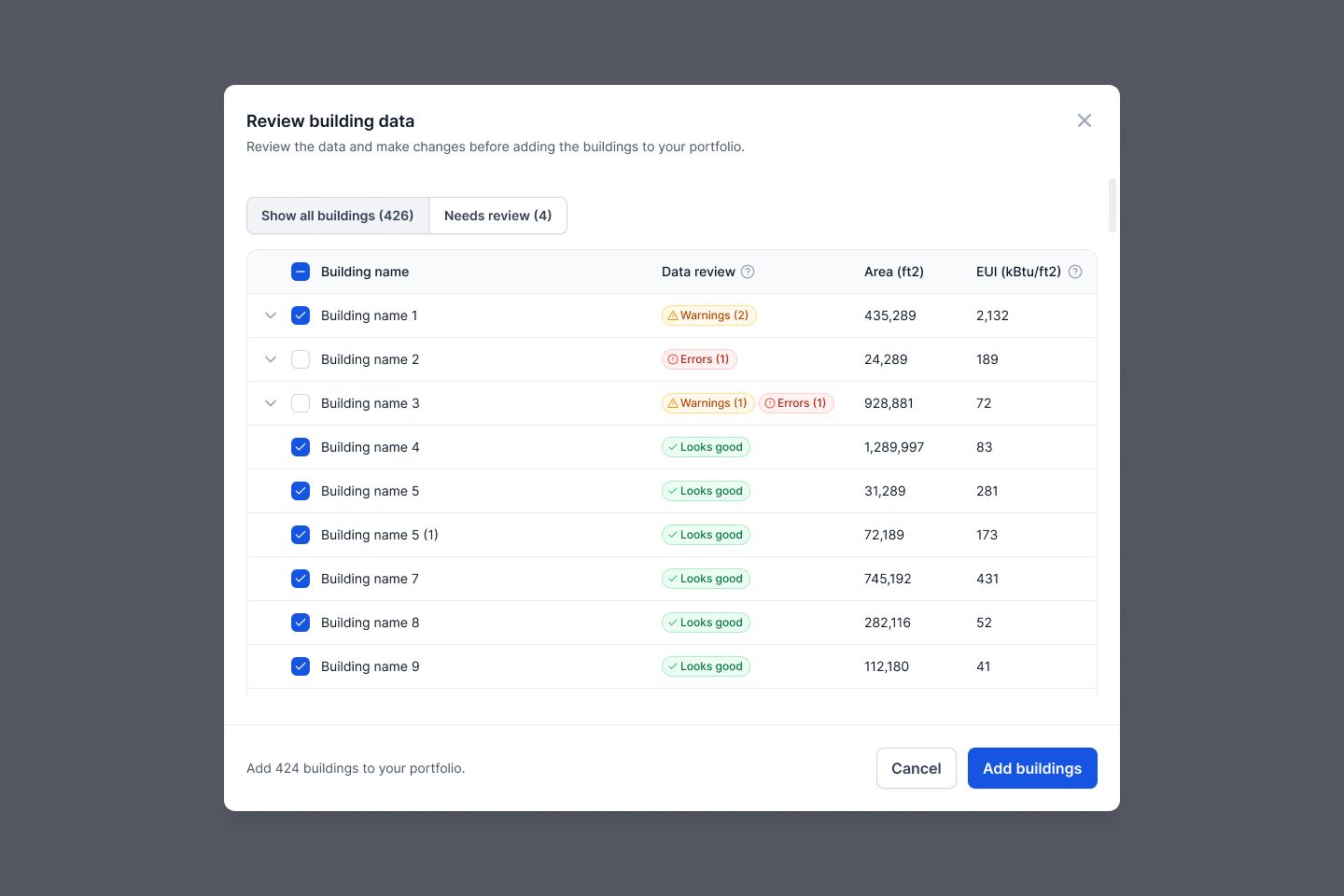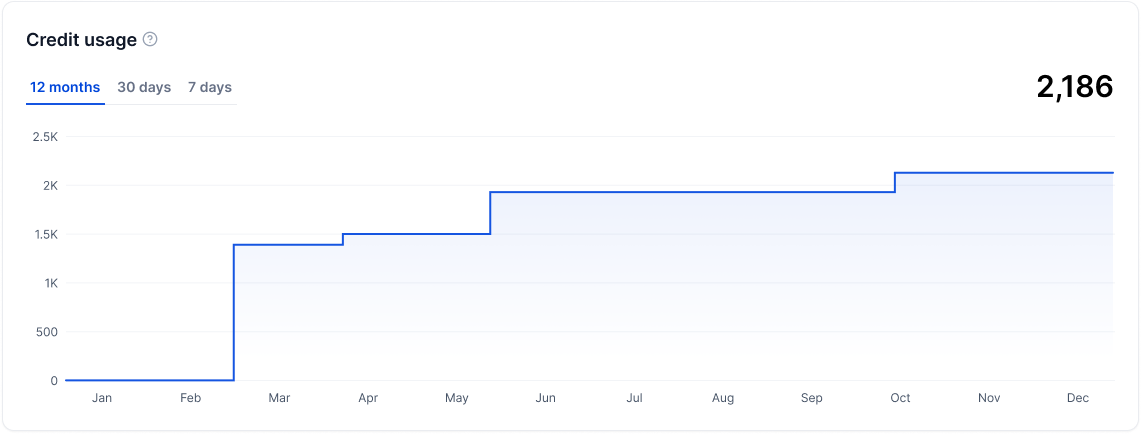We’ve now made it easier to get started with building analysis on Carbon Signal, even in the absence of utility data.
Support for Buildings Without Utility Data
You can now upload buildings without any utility data. Simply provide the building’s floor area and location, and the platform will automatically generate analysis for the building, allowing you to estimate performance and explore decarbonization opportunities even in the absence of utility data.
If you have additional information about a building, such as details on the HVAC or lighting system, you can use the Model Refinement feature to further improve accuracy.
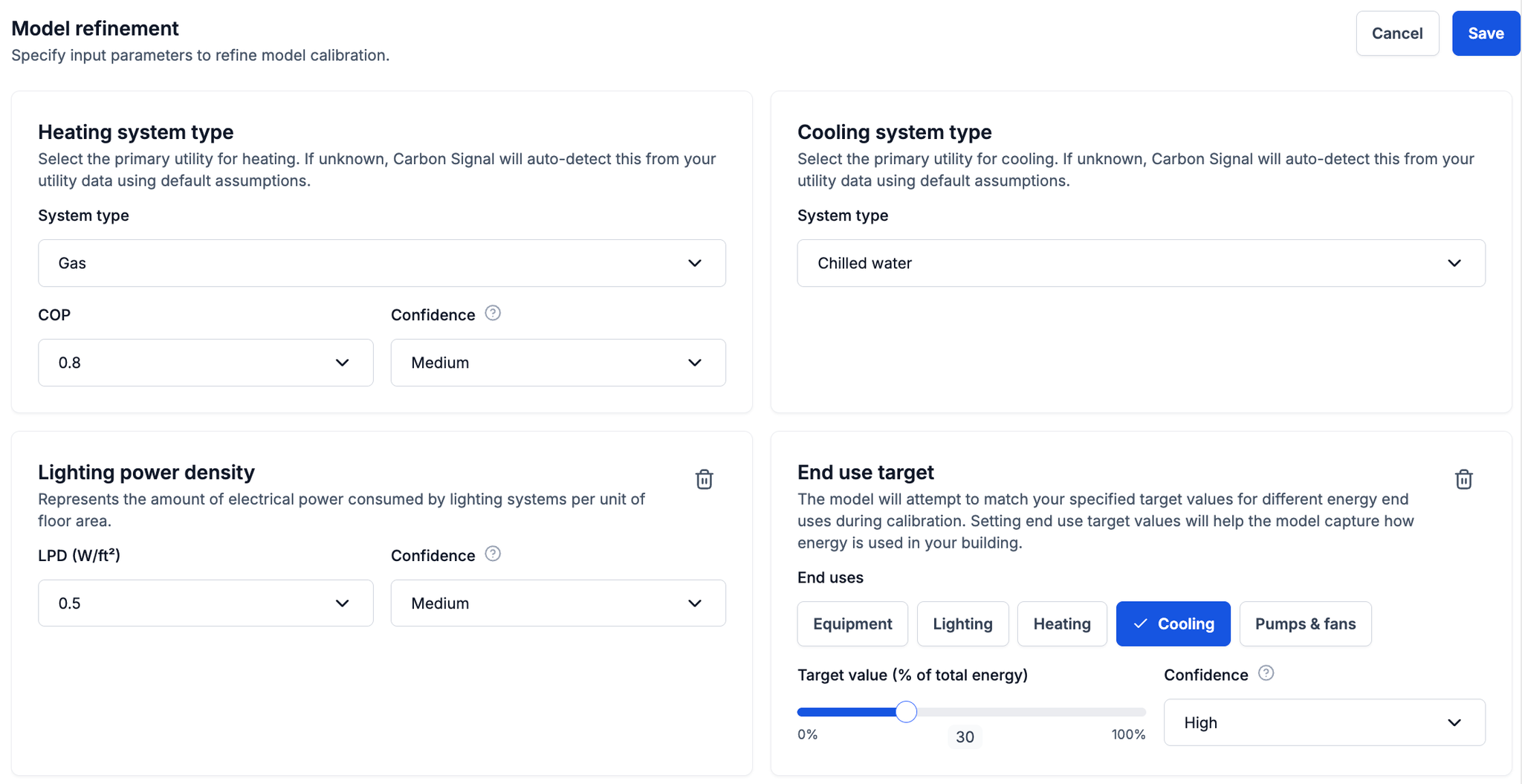
This powerful update makes it possible to complete analysis for buildings during acquisition or leasing, when utility data might not yet be accessible, but where it is still important to understand energy performance and decarbonization requirements.
Other use cases include:
- Early-stage projects: Run decarbonization analysis on design-stage or newly constructed assets before occupancy.
- Portfolio analysis: Include buildings without energy data to maintain a complete portfolio view of energy and carbon performance.
With this new feature, you can move faster to action, ensuring every building, regardless of data availability, can be included in your decarbonization strategy.

